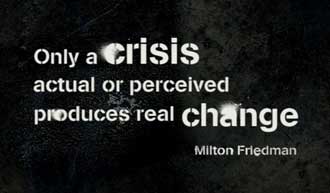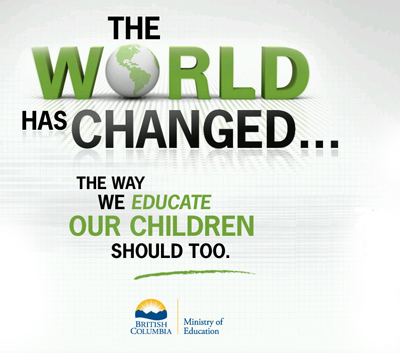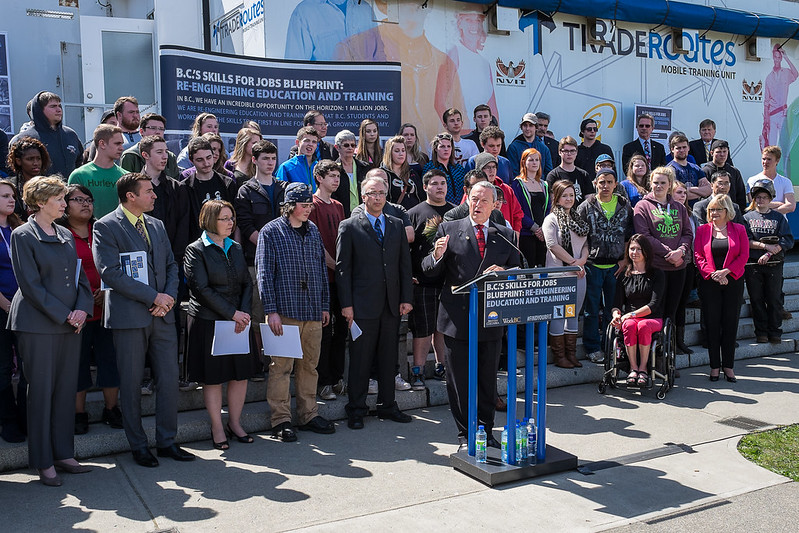 I: The Digital Shock & Curricular Reinvention
I: The Digital Shock & Curricular Reinvention
“We are living in the middle of the largest increase in expressive capacity in the history of the human race,” declared Clay Shirky in his 2008 tome Here Comes Everybody: The Power of Organizing without Organizations (Shirky, 2008). In the intervening years we have continued to see an emphasis in curricular thought and reform which seeks to realize the potential of a dawning Digital Age. In blog posts and cable news investigations, parent-advisory council meetings and teacher professional development events, academic scholarship and TED Talk distillations, discussions about curriculum struggle toward consensus on what might constitute an education for the 21st Century. Such a time is fraught with both possibility and peril.
Simsek and Simsek describe the Digital Age as a time when “forms of information have changed drastically” (Simsek & Simsek, 2013), so much so that they are capable of inducing a state of shock:
“Information is an integral part of daily life in today’s society in order for individuals to survive against information-related requirements. Production of knowledge requires different skills than those necessary for producing goods. Thus, the concept of shock could be interpreted partly as the feelings of the confusions of people, being aware of not having necessary skills for the new literacies” (p. 127).
In contemplating the nature of shock as might effect curricular reform, it can be helpful to consider Naomi Klein’s Shock Doctrine, wherein she presents the rise of neoliberal capitalism and its champion Milton Friedman’s ideas across the latter half of the twentieth century. Friedman, Klein observes, looked to the onset of crises and shocks as opportunities to radically intervene in the reform process, noting his admission that “Only a crisis – actual or perceived – produces real change. When that crisis occurs, the actions that are taken depend on the ideas that are lying around (Klein, 2008).”
Looking toward the unique challenges presented by the Digital Age, David Perry recommends taking “note of the plasticity of digital forms and the way in which they point toward a new way of working with representation and mediation, that might be called the digital ‘folding’ of reality, whereby one is able to approach culture in a radically new way” (Perry, 2011).
As this ‘folding’ of reality administers structural changes across society, curricular reform lies at the center of digital reinventions of politics, economics, creative expression and collaboration, the natural sciences and perspectives on the nature of life and consciousness itself. However, such broad educational considerations are hardly novel, as Egan noted in 1978 that once started down the path of inquiry into the methodology of education, “there becomes little of educational relevance that can be excluded from the curriculum field” (Egan, 1978). Thus, the regeneration of our curricula to suit the Digital Age is something that ought be carefully engaged to ensure an authentic expression of society’s best intentions for education.
Ralph W. Tyler’s Principles of Curriculum and Instruction outlines a rationale for viewing, analyzing and interpreting an instructional program as an instrument of education. Tyler notes “no single source of information is adequate to provide a basis for wise and comprehensive decisions about the objectives of the school,” (Tyler, 2013), and advocates for a comprehensive discussion of curricular purposes from each of the progressive, essentialist, sociologist, and educational philosopher’s perspectives:
“The progressive emphasizes the importance of studying the child to find out what kinds of interests he has, what problems he encounters, what purposes he has in mind.
“The essentialist, on the other hand, is impressed by the large body of knowledge collected over many thousands of years, the so-called cultural heritage, and emphasizes this as the primary source for deriving objectives.
“[Sociologists] view the school as the agency for helping young people to deal effectively with the critical problems of contemporary life. If they can determine what these contemporary problems are then the objectives of the school are to provide those knowledges, skills, attitudes and the like that will help people deal intelligently with these contemporary problems.
“[Educational philosophers] see the school as aiming essentially at the transmission of the basic values derived by comprehensive philosophic study and hence see in educational philosophy the basic source from which objectives can be derived (p. 4-5)”
This paper seeks to examine the Government of British Columbia’s Education Plan (BCEdPlan) from each of these perspectives with the hopes of furthering discussion of the potential of curricular reform in the Digital Age within the province.
II: Principles of Curriculum and Instruction in the BCEdPlan
In 2012, the British Columbia Ministry of Education began consultations to bring about changes in the province’s K-through-12 curriculum. Guided by the Premier’s Technology Council 2010 report, A Vision for 21st Century Education (Council, 2010), the BCEdPlan was published in 2013 and shares the province’s vision for teaching and learning in the Digital Age, with reforms set to address curricular goals and assessments, graduation requirements, transitions to post-secondary learning, parent-communication, and even the physical time and place of formalized schooling (Government, 2013b). These changes are guided by the EdPlan’s Five Key Elements (p. 5):
- Personalized Learning for Every Student
- Quality Teaching and Learning
- Flexibility and Choice
- High Standards
- Learning Empowered with Technology
“While a solid knowledge base in the basic skills will be maintained,” the BCEdPlan admits that better preparing students for the future will require greater emphasis on teaching “key competencies like self-reliance, critical thinking, inquiry, creativity, problem solving, innovation, teamwork and collaboration, cross-cultural understanding, and technological literacy” (p. 4).
At the time of this writing, the Ministry of Education has begun posting draft versions of subject and grade curricula from grades kindergarten to nine. The intent of this section of the paper is to investigate the formally published BCEdPlan with the hope that this discussion might lead to a similarly critical analysis of subject curriculum as it comes more clearly into focus.
Progressive
In its advocacy on behalf of student choice and flexibility, the BCEdPlan may be seen to embrace tenants of the progressive mindset. By looking to develop students’ passions, self-reliance, and personalizing the learning experience of each individual, the focus on role of the child in the schooling process is soundly rooted in progressive principles.
While the BCEdPlan does state its intention to prepare students to “realize their full potential and contribute to the well-being of our province” (p. 5), less well emphasized are the democratic traditions of the progressive movement. The words ‘society,’ and ‘democracy,’ do not appear in the BCEdPlan; however it does state as an objective for further action that “We will work with our education partners to identify the attributes of an educated citizen and how that will be articulated throughout the education program culminating in graduation” (p. 5). Curricular discussions in British Columbia might delve further into the progressive promise of student-centered learning characterized by John Dewey, who warned of the danger that increased personal independence could decrease the social capacity of an individual” (Dewey, 1916):
“In making him more self-reliant, it may make him more self-sufficient; it may lead to aloofness and indifference. It often makes an individual so insensitive in his relations to others as to develop an illusion of being really able to stand and act alone — an unnamed form of insanity which is responsible for a large part of the remedial suffering of the world (p. 42).”
Essentialist
Essentialists, meanwhile, may not see their approach as integral to the BCEdPlan, which cites as an operating premise the idea that “The world has changed and it will continue to change, so the way we educate students needs to continually adapt” (p. 5). The impetus for the education revolution in British Columbia and other jurisdictions around the world is an acknowledgement that the Digital Age has so fundamentally changed the nature of society that new skills and knowledge(s) are required for tomorrow’s citizens. And while it may include traditional values and legacies such as cross-cultural understandings and assurances that core knowledge and “basic skills” such as literacy and math will be preserved, the BCEdPlan looks to create and define new skills and proficiencies – e.g. “innovation” and “creativity” – which essentialists may view as components of a much lengthier cultural heritage.
For example, the essentialist may view the advent of new communications technology as an opportunity to apply the lessons of past revolutions in reproduction and collaboration to contemporary curriculum. Providing an education in the background of the relationships between advances in technology and human creativity, for instance, could prove a valuable instructor for young people learning about literacy in the Digital Age. Bruner describes undertaking such a task as learning about “not only the role of tools or language in the emergence of man, but as a necessary precondition for doing so, setting forth the fundamentals of linguistics of the theory of tools” (Bruner, 1966).
It remains to be seen the amount of influence these and other cultural legacies will exert in the pending British Columbia curricula, however the tenor and intent of the BCEdPlan as stated casts its gaze decidedly toward the future, potentially at the expense of the vast cultural learning about the past.
Sociologist
The BCEdPlan adopts a sociological lens in developing curriculum that is part of a broader government agenda to confront the perceived needs of our historical moment. As part of its Jobs Plan (BCJobsPlan), the Government of British Columbia declares that it is “reengineering education and training so that BC students and workers have the skills to be first in line for jobs in a growing economy” (Government, 2013a). Within this broader context, the critical contemporary problems British Columbian curriculum intends to address come into clearer focus, as education is redrawn from the bottom up, in three stages:
- A Head Start Learning to Hands-on Learning in Our Schools that will “give [students] an earlier head-start to hands-on learning, so [they’re] ready for the workforce or more advanced training when [they] graduate” (p. 8);
- A Shift in Education and Training to Better Match with Jobs in Demand to [maximize] spaces available to provide the programs [students] need to compete successfully in the workforce” (p. 8); and
- A Stronger Partnership with Industry and Labour to Deliver Training and Apprenticeships to “better connect [students] with the on-the-job and classroom training [needed] to boost […] skills or achieve certification” (p. 8).
Sociologists may be encouraged by the consideration of such economic metrics to guide the creation of British Columbian curriculum. However, by viewing the BCEdPlan as embedded within the government’s more comprehensive BCJobsPlan[1], they might find the purview of this sociological study to be narrowly focused or to ignore altogether areas of potentially more pressing contemporary importance. “To make the most effective use of our education and training resources,” the BCJobsPlan notes, “we will rely on the best data and […] the most up-to-date labour market information […] to guide government decision-making and to determine spending priorities” (p. 7).
Further sociological study may seek to critically address 21st century problems such as inequality, environmental degradation, or the degree to which our education systems help actualize the democratic ideals enshrined in the Canadian Charter of Rights and Freedoms (Canada, 1982) or Multiculturalism Act (Canada, 1988).
Educational Philosophy
While the first of these three lenses might assert different resolute perspectives toward the creation of curricular purposes, the educational philosopher approaches the discussion in the tradition of the humanities, and is thus “committed to the concept of knowledge as interpretation” (Drucker, 2011), as well as the idea:
“That the apprehension of the phenomena of the physical, social, cultural world is through constructed and constitutive acts, not mechanistic or naturalistic realist representations of pre-existing or self-evident information” (par. 7).
Educational philosophers may be critical of the BCEdPlan’s reliance on “the best data and labour market projections” to direct educational resources at the expense of allowing a more broadly constructed view of education’s role in democracy into the decision-making process, as this data assumes a market-oriented solution to a perceived educative problem. Others may highlight the similarity between this practice and the economic project authored by Milton Friedman in the form of neoliberal capitalism, “the doctrine that market exchange is an ethic in itself, capable of acting as a guide for all human action” (Harvey, 2005).
The educational philosopher may also challenge the symbolic representation and meta-messages about the nature or purpose of education communicated in the language and design of schooling, as Giroux has noted that the “survival-of-the-fittest ethic has replaced any reasonable notion of solidarity, social responsibility and compassion for the other” (Giroux, 2012).
III: Further Discussion
Analyzed through these various perspectives, the creation of 21st century curriculum in British Columbia can be seen to highlight aspects of both the progressive and sociological perspectives. While each of these lenses could be explored further, a more comprehensive approach to addressing essentialist and philosophical concerns would allow a more broadly constructed view of curriculum in the Digital Age. In implementing its notion of 21st century learning, the government of British Columbia should be especially willing to experiment with new technology in developing a curriculum reflective of the digital medium’s message (McLuhan & Fiore, 1967), lest our collective aspirations for the future be limited unnecessarily by perceived economic realities.
The ‘shock’ of the Digital moment provides an opportunity for both critique and the establishment of new myths surrounding education, the broader enactment of which Michel Foucault described as Enlightenment (Foucault, 1984), or critical ontology, something that should “be considered not, certainly, as a theory, a doctrine, nor even as a permanent body of knowledge that is accumulating,” but rather, “a philosophical life in which the critique of what we are is at one and the same time the historical analysis of the limits that are imposed on us and an experiment with the possibility of going beyond them.”
Paulo Freire described a similar sense of enlightenment at the root of an emancipatory critical praxis, whereby “critical perception is embodied in action, [and] a climate of hope and confidence develops which leads men to attempt to overcome the limit-situations” (Freire, 1970). This emancipation constitutes an active citizenship that continues to transform reality, “and as these situations are superseded, new ones will appear, which in turn will evoke new limit-acts” (p. 99).
By applying such critical discourses to the negotiation and expression of societal interests with respect to curriculum, we are presented with one of the unique democratic opportunities presented by the Digital Age itself. Indeed, as Simsek and Simsek point out, “the free flow of information through new technologies is consistent with the requirements of deliberative democracy.” However, as the man largely credited with the developing the World Wide Web, Tim Berniers-Lee, recently noted, “Unless we have an open, neutral internet […] we can’t have open government, good democracy, good healthcare, connected communities and diversity of culture” (Kiss, 2014).
In encountering the Digital Age, educators and those interested in constructing curriculum are well-served by embracing the spirit of the open and interconnected web, and playing what Jim Groom and Brian Lamb call for as “a decisive role in the battle for the future of the web” (Groom, 2014). They write, “It is well within the power of educators” to engage in this struggle, though admit that it “will require an at-times inconvenient commitment to the fundamental principles of openness, ownership, and participation.”
As the Ministry of Education continues to unveil its vision for the future of education in British Columbia, these and other questions, perspectives and concerns raised in the discussion of this paper are presented with the intention of further engaging an ongoing discussion of curricular purpose in the province.
Bruner, J. S. (1966). Toward a theory of instruction (Vol. 59): Harvard University Press.
The Constitution Act, 1982 (1982).
Canadian Multiculturalism Act (1988).
Council, Preimier’s Technology. (2010). A Vision for 21st Century Education
Dewey, J. (1916). Democracy and education: An Introduction to the Philosophy of Education. New York: Macmillan.
Drucker, J. (2011). Humanities approaches to graphical display. Digital Humanities Quarterly, 5(1).
Egan, K. (1978). What is curriculum? Curriculum Inquiry, 65-72.
Foucault, M. (1984). What is Enlightenment? . In P. Rabinow (Ed.), The Foucault Reader. New York: Pantheon Books.
Freire, P. (1970). Pedagogy of the Oppressed (M. B. Ramos, Trans. 30th Anniversary Edition ed.): The Continuum International Publishing Group Inc.
Giroux, H. (2012). Education and the crisis of public values. Peter Laing, New York.
Government, B. C. (2013a). BC Jobs Plan
Government, B. C. (2013b). BC’s Education Plan Province of British Columbia.
Groom, J. L., Brian. (2014). Reclaiming Innovation. EducausE review, Online.
Harvey, D. (2005). A brief history of neoliberalism: Oxford University Press.
Kiss, J. (2014, March 12, 2014). An online Magna Carta: Berners-Lee calls for bill of rights for web. The Guardian
Klein, N. (2008). The shock doctrine: the rise of disaster capitalism.
McLuhan, M., & Fiore, Q. (1967). The medium is the message. New York, 123, 126-128.
Perry, D. (2011). The Computational Turn: Thinking about the Digital Humanities. Culture Machine(Spec. Issue ).
Shirky, C. (2008). Here comes everybody: The power of organizing without organizations: Penguin.
Simsek, E., & Simsek, A. (2013). New Literacies for Digital Citizenship. Online Submission, 4(3), 126-137.
Tyler, R. W. (2013). Basic principles of curriculum and instruction: University of Chicago press.
[1] Where the BCEdPlan runs just under 8 pages, the BCJobsPlan measures just fewer than 50.



![The Virtual Self @nora3000 at #Brocku [visual notes]](https://farm9.staticflickr.com/8097/8579185198_ff7557417f_c.jpg)



